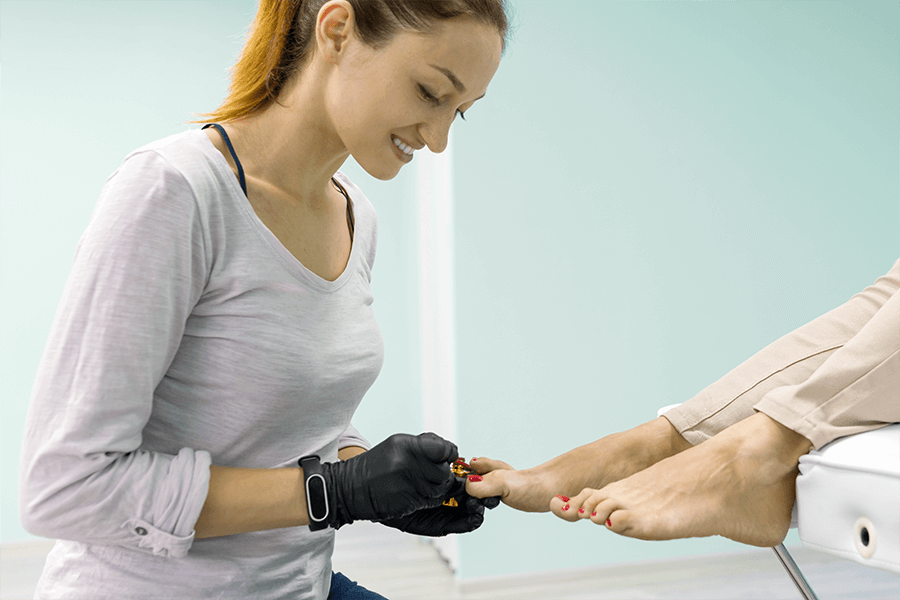Nail Care for Patients: Can a Home Health Aide Cut Nails?
There is a great deal of debate surrounding whether or not home health aides (HHA) are capable of cutting patients’ nails.
The answer, as with most things in life, is that it depends.
The elderly foot and nail care is a common task delegated by nurses to HHAs and CNAs in nursing homes, assisted living communities, home health agencies and hospitals.
HHAs and elderly foot care
Although there are many elderly individuals who have no problems with their feet or nails but some elderly people may suffer from diseases such as diabetes which can affect their mobility or peripheral circulation making them unable to cut nails properly themselves. So this needs special attention both for elderly patients as well as family members who wish to help with caring of an elderly person’s nails.
Most home health aides job descriptions can provide basic foot and nail care for elderly patients who are otherwise healthy but cannot perform the task themselves due to a vision, orthopedic, or neurologic deficiency. However, they should never attempt to cut nails if the patient has any co-morbid conditions that lead to vascular, neurologic, or dermatologic disorders and are therefore at high risk of trauma or infection from inadequate foot care.
Nail cutting is a relatively simple task, but it can be dangerous if performed incorrectly. Home health aides should take care to avoid nicking the elderly patient’s skin, as this can lead to infection. They should also make sure that they use proper nail-cutting techniques and sterilized equipment in order to prevent the spread of bacteria or fungus.
Nail changes in the elderly
Geriatric care is becoming more of a complicated and multidisciplinary effort in which the role that the home care team play will be increasingly important as we experience longer lifespans.
Nail changes are common in older adults, and family physicians should be able to diagnose these problems. However it’s important for them also recognize less serious but still relevant issues if their nails aren’t looking right with age or stress-related health concerns like diabetes may lead to.
Caregivers should be aware that changes in the nails can indicate an illness or injury. Careful observation during a medical exam may help to prevent missing this important sign.
While it is not easy to diagnose nail abnormalities, if one knows what they are looking for then a family practitioner can provide better care of this large and growing elderly population.
Elderly people, especially elderly women, may develop longitudinal ridging and distal onycholysis. The precise etiology is unknown but factors that are thought to contribute include exposure to acrylic nails, trauma, ionic nail polish removers, epoxy resin adhesive , parental hand dermatitis , psoriasis , and aging.
Nail care: states have a say what HHAs can do
When it comes to nails, most states have a list of appropriate certified home health aide functions that may be performed under the supervision of an LPN through licensed home health agencies. Under this category you will find “nail care” as one possible task for your assistant with minimal physical contact required – unless podiatrists are needed in which case their services might need contacting ahead about specifics on what they can do specifically.
As for elderly nail care, it’s important to keep them trimmed and filed down to avoid ingrown nails or infection. Home health aides can certainly cut nails as long as they are properly trained and understand how to do so without causing any damage. If you’re not sure whether your home health aide is qualified to perform this task, be sure to ask their supervisor before having them take on the responsibility.
When it comes to cares of the nails, there is one rule that all states follow: licensed nursing personnel are required for diabetic residents. HHA’s and CNA’s can do any other patient though because they typically don’t visit regularly in this case; instead usual treatment methods include podiatry appointments (footcare).
At the home health care agency level, nail care is a task delegated by a registered nurse. Your agency should have a policy or procedure in place for such tasks.
The nail policy should be clear and concise so HHA’s can easily accommodate all of the necessary information. The RNs need to follow these regulations, or else there could potentially an issue with the patient.
Yours, FREE!
What HHA’s CAN and CAN’T Do!
Download this brand new guide on what home health aides can and cannot do. The rules have changed so don’t get caught off guard. Know your limits and the law.








